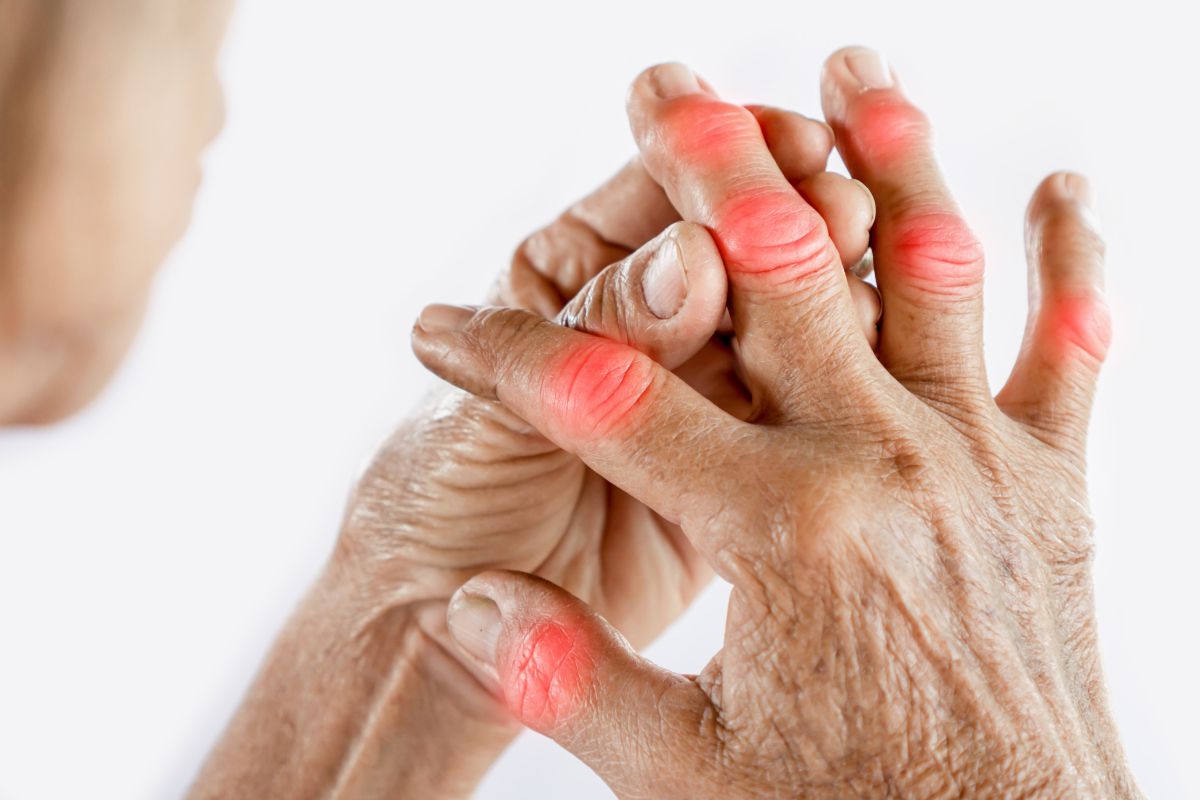What are the symptoms of rheumatoid arthritis?
Rheumatoid arthritis (RA) is a chronic autoimmune disorder that primarily affects the joints, but it can also have systemic effects. Symptoms of RA can vary from person to person but commonly include:
- Joint Pain and Swelling: Typically affects the small joints of the hands and feet, causing pain, swelling, and stiffness. Joints may feel warm to the touch and look swollen.
- Morning Stiffness: Stiffness in the joints that lasts for at least 30 minutes upon waking up, often improving as the day progresses.
- Fatigue: General feeling of tiredness or lack of energy, which can be persistent and affect daily activities.
- Fever: Low-grade fever is sometimes present, particularly during flare-ups.
- Loss of Joint Function: Over time, RA can lead to joint deformities and a decrease in the ability to move the affected joints.
- Symmetrical Joint Involvement: RA often affects joints on both sides of the body in a symmetrical pattern.
- Rheumatoid Nodules: Painless lumps or nodules that develop under the skin, usually near the elbows or on the fingers.
- General Malaise: A general feeling of being unwell or discomfort.
- Weight Loss: Unintended weight loss may occur due to inflammation and the body’s response to chronic illness.
In some cases, RA can affect other parts of the body, leading to symptoms such as dry eyes and dry mouth (Sjogren’s syndrome), lung issues, or cardiovascular problems. The severity and progression of symptoms can vary widely among individuals.
What are the causes of rheumatoid arthritis?
The exact cause of rheumatoid arthritis (RA) is not fully understood, but it is believed to result from a combination of genetic, environmental, and immune system factors. Here are some key factors thought to contribute to the development of RA:
- Genetics: Certain genetic markers, such as the HLA-DRB1 gene, are associated with an increased risk of developing RA. While genetics play a role, they are not the sole cause, as many people with these markers do not develop the condition.
- Immune System Dysfunction: RA is an autoimmune disorder where the immune system mistakenly attacks the synovium (the lining of the joints), leading to inflammation and joint damage.
- Environmental Factors: Various environmental triggers may contribute to RA. These can include infections, smoking, and exposure to certain chemicals. Infections, in particular, may trigger an immune response that causes the body to attack its own tissues.
- Hormonal Factors: Hormonal changes, such as those related to pregnancy or menopause, may influence the onset and progression of RA. The condition is more common in women, suggesting that hormonal factors might play a role.
- Lifestyle Factors: Smoking is a significant risk factor for developing RA and can exacerbate the condition. Some studies suggest that diet and obesity might also influence the risk and progression of RA.
- Other Factors: Stress and trauma might also contribute to the development or worsening of RA, though their exact role is less clear.
Overall, RA is a complex condition with multiple interacting factors contributing to its onset and progression.
What is the treatment for rheumatoid arthritis?
The treatment for rheumatoid arthritis (RA) aims to reduce symptoms, improve function, and prevent joint damage. The approach typically involves a combination of medications, lifestyle changes, and sometimes surgical interventions. Here’s an overview of the treatment options:
Medications:
- Disease-Modifying Antirheumatic Drugs (DMARDs): These drugs, such as methotrexate and sulfasalazine, help slow disease progression and prevent joint damage. They are often used as a long-term treatment.
- Biologic Agents: These are a subset of DMARDs that target specific components of the immune system. Examples include TNF-alpha inhibitors (like adalimumab and etanercept) and IL-6 receptor inhibitors (like tocilizumab). They are usually prescribed when traditional DMARDs are not effective.
- Nonsteroidal Anti-Inflammatory Drugs (NSAIDs): These medications, including ibuprofen and naproxen, help reduce pain and inflammation but do not slow disease progression.
- Corticosteroids: Drugs like prednisone can quickly reduce inflammation and control symptoms. They are often used for short-term flare-ups due to their potential side effects with long-term use.
- Janus Kinase Inhibitors: These newer medications, such as tofacitinib, target specific pathways in the immune response and can be used when other treatments are insufficient.
Lifestyle Changes:
- Exercise: Regular physical activity helps maintain joint function, reduce stiffness, and improve overall health. Low-impact exercises, like swimming and walking, are often recommended.
- Healthy Diet: A balanced diet rich in anti-inflammatory foods, such as fruits, vegetables, and omega-3 fatty acids, can help manage symptoms. Weight management is also important to reduce stress on the joints.
- Rest and Stress Management: Adequate rest and techniques to manage stress, such as relaxation exercises or counseling, can improve overall well-being.
Physical and Occupational Therapy:
- Physical Therapy: Helps with exercises and techniques to improve joint mobility and strength. Therapists may also provide guidance on proper body mechanics and ergonomics.
- Occupational Therapy: Assists with adapting daily activities and using assistive devices to protect joints and improve function.
Surgical Interventions:
- Joint Surgery: In cases where medications and other treatments are not effective, surgery may be considered. Options include synovectomy (removal of inflamed synovial tissue), joint replacement (arthroplasty), or joint fusion (arthrodesis) to stabilize the joint.
Regular Monitoring and Follow-Up:
- Ongoing Care: Regular visits to a rheumatologist for monitoring disease activity, adjusting medications, and managing side effects are crucial for effective RA management.
Treatment plans are individualized based on the severity of the disease, the patient’s overall health, and response to medications.

Leave a Reply
You must be logged in to post a comment.